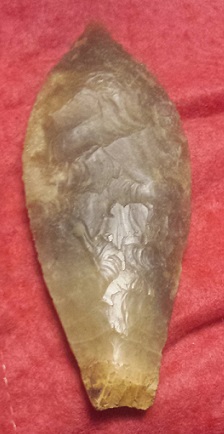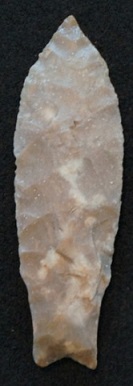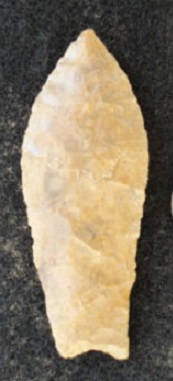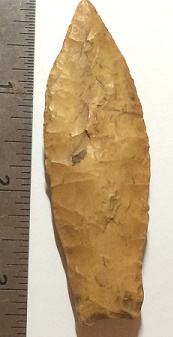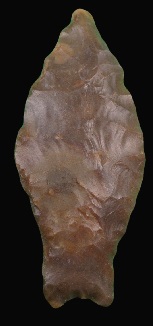Outline is Representative of Size and Shape:

Name Details:
Identified By: William "Bill" W. Birmingham and Thomas. R. Hester
Named For:
Date Identified: 1976
Type Site:
Identified By: William "Bill" W. Birmingham and Thomas. R. Hester
Named For:
Date Identified: 1976
Type Site:
Point Validity:
Valid type
Birmingham was an avocational archaeologist who was influential in the archaeology of southern Texas archaeology. Hester is a distinguished anthropologist and a Professor Emeritus at the University of Texas – Austin. Hester has conducted extensive studies in archaeology of Texas which has greatly increased our understanding of Texas archaeology. This type was named in a professional publication and has many professional references. This is considered a valid type.
Birmingham was an avocational archaeologist who was influential in the archaeology of southern Texas archaeology. Hester is a distinguished anthropologist and a Professor Emeritus at the University of Texas – Austin. Hester has conducted extensive studies in archaeology of Texas which has greatly increased our understanding of Texas archaeology. This type was named in a professional publication and has many professional references. This is considered a valid type.
Victoria Lanceolate
AKA: Victoria AngosturaCluster:
Description of Physical Characteristics and Flaking Pattern:
This is a medium to large stemmed lanceolate point with an elliptical cross section. The blade is excurvate with the blade curving in at the tip and having parallel edges. The shoulder is weak to absent and at an upward angle. The stem may vary from straight to expanding at the base. Then base ranges from slightly concave to concave and may have basal thinning or grinding. The most common flaking pattern in oblique parallel with random flaking also being common. Less commonly seen is horizontal transverse.
Size Measurements:
Length - 50 to 105 mm, Stem Length - 18 to 23 mm (20 mm most common), Blade Width - 18 to 42 mm, Basal Width - 11 to 15 mm, Thickness - 9 mm average
Length - 50 to 105 mm, Stem Length - 18 to 23 mm (20 mm most common), Blade Width - 18 to 42 mm, Basal Width - 11 to 15 mm, Thickness - 9 mm average
Commonly Utilized Material:
Additional Comments:
Birmingham and Hester (1976) named this point Victoria Angostura for examples they found in the Coastal Plains region of Texas. Thomas Kelly (1983) did an analysis of Angostura point found in central to the Coastal Plains region of Texas (primarily McMullen County, Texas) and identified three variants of the Angostura points found in Texas. He identified / further defined types as the Texas Angostura, Victoria Angostura, and the Zella Angostura.
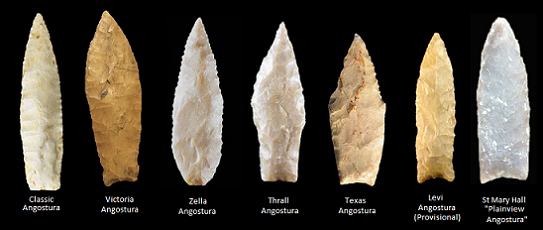
Birmingham and Hester (1976) named this point Victoria Angostura for examples they found in the Coastal Plains region of Texas. Thomas Kelly (1983) did an analysis of Angostura point found in central to the Coastal Plains region of Texas (primarily McMullen County, Texas) and identified three variants of the Angostura points found in Texas. He identified / further defined types as the Texas Angostura, Victoria Angostura, and the Zella Angostura.

Distribution: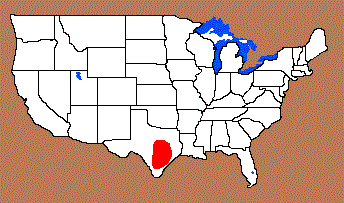
Distribution Comments:
This point is primarily found in east and south central Texas and into the Coastal Plains region..
This point is primarily found in east and south central Texas and into the Coastal Plains region..
Age / Periods:
Date: 8,800 - 8,100 B.P.
Cultural Period: Transitional Paleo
Glacial Period: Early Holocene
Culture:
Date: 8,800 - 8,100 B.P.
Cultural Period: Transitional Paleo
Glacial Period: Early Holocene
Culture:
Age Details:
Other points in this cluster / Related / Associated Points:
Angostura, Levi, St. Mary's Hall, Thrall, Zella
Angostura, Levi, St. Mary's Hall, Thrall, Zella

